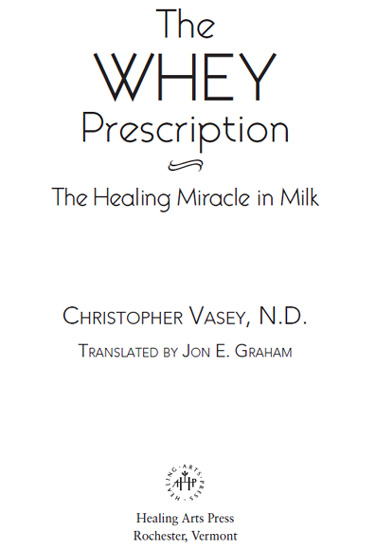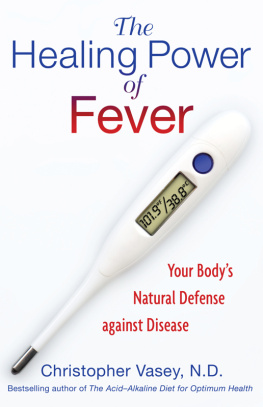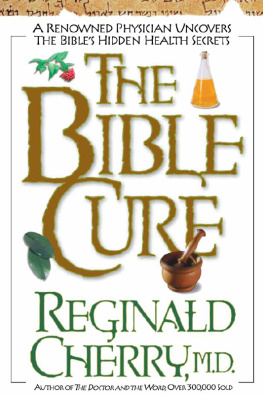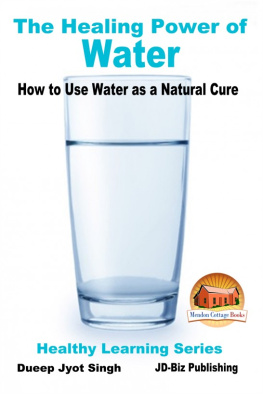
May your foods be your medicines.
HIPPOCRATES
Contents


Appendix 1:
Appendix 2:

The History of Whey

A patient in the city of Zurich, Switzerland, whom the medical treatments of the time were unable to cure and to whom the doctors were giving little time left to live, journeyed to the mountain village of Gais (in the canton of Appenzell Ausserrhoden) in 1749 and was healed of his disease by drinking whey on a daily basis.
Was this patient aware of the past success of treatments based on drinking whey, the liquid known to the Greek doctors of antiquity as healing water? Or had he heard the peasants of this mountainous region talk about wheys healing properties?
We dont know, but the news soon spread of this patient, who survived despite his doctors terrible diagnosis, and numerous people with illnesses flooded to Gais to benefit in turn from the miraculous healing properties of whey. A health spa was soon created in this tiny village. It was followed by the opening of more than 160 others in Switzerland, Austria, and Germany. These spas were most active in the middle of the eighteenth century and throughout the nineteenth century. The renowned benefits of the whey cure brought emperors, princes, and aristocrats from all of Europe to take the cure in these spas, to be healed of their ailments or simply to improve their general health.
What is most amazing about whey is that its healing properties have been recognized since antiquity, and modern scientific research has only confirmed the knowledge of the ancients. The whey cure is used today just as it was twenty-four centuries ago. Few remedies or cures can boast of such a long history and such unanimous agreement about their virtues.
Hippocrates (466377 BCE), the father of medicine, recommended whey to his patients. Following him, Galen (131200 CE), another founding father of medicine, advised his patients about the whey cure. For a time he even directed a treatment center, sponsored by the famous school of Salerno, at the foot of the milk mountain in Italy, between Sorrento and Naples.
Whey cures were also recommended by other famous names from the history of medicine: the Islamic doctor and author of nearly two hundred works, Ibn S n
n , known in the West as Avicenna (9801037 CE); Thomas Sydenham (162489), the English Hippocrates, who especially recommended whey for the treatment of gout; Hermann Boerhaave (16681738), the famous Dutch physician whose methods of clinical instruction were used throughout Europe; Victor Albrecht von Haller (170877), the Swiss biologist, considered the father of neurology, who discovered the function of bile; Christoph Wilhelm Hufeland (17621836), the German physician who taught how to prolong life by adopting healthier ways of living; and Samuel Auguste Tissot (172897), of Switzerland, remembered for his studies on migraines, which laid the foundation for future research by generations of doctors.
, known in the West as Avicenna (9801037 CE); Thomas Sydenham (162489), the English Hippocrates, who especially recommended whey for the treatment of gout; Hermann Boerhaave (16681738), the famous Dutch physician whose methods of clinical instruction were used throughout Europe; Victor Albrecht von Haller (170877), the Swiss biologist, considered the father of neurology, who discovered the function of bile; Christoph Wilhelm Hufeland (17621836), the German physician who taught how to prolong life by adopting healthier ways of living; and Samuel Auguste Tissot (172897), of Switzerland, remembered for his studies on migraines, which laid the foundation for future research by generations of doctors.
Contrary to what its French name, petit-lait, which means little milk, might suggest, whey is not a poor relative of milk. While milk is universally esteemed for its nutritional value, whey is valued for its many healing properties. These properties are enhanced by the fact that whey is easily digested and can be drunk in much larger quantities than milk. Wheys therapeutic activity is beneficial to the major organs of the body: heart, liver, kidneys, and intestines. Its action is cleansing, detoxifying, and regenerative. It has beenand still isused with success for liver diseases (hepatic insufficiency, hepatitis, gallstones); kidney disorders (infections, kidney stones, edema); intestinal disorders (fermentation, flatulence, constipation, chronic indigestion, bloating); joint diseases (rheumatism, arthritis, osteoarthritis, gout); and against the scourge of modern illnesses, the cardiovascular diseases (high cholesterol, high blood pressure, heart attacks). Whey is also very effective in the fight against excess weight (obesity) and skin disorders (acne, eczema), and for improving general health and well-being.
Like many other remedies, the whey cure has experienced its times of glory and times of oblivion. Those times when the cure was abandoned were not due to the ineffectiveness of whey, but rather to problems involving its preservationa dilemma that has now been resolved.
Whey is an extremely perishable beverage, which must be consumed within nine to ten hours of its manufacture. Liquid whey quickly spoils, and changes in its taste and odor make it undrinkable. Now, thanks to the fabrication of whey in powder form, its benefits are available to everyone.
In the eighteenth-and nineteenth-century health spas, a carefully timed system had to be put in place so that people wishing to take this cure could have whey at their disposal. Whey that had been prepared late at night was carried, at about 3 a.m., from remote mountain cheese makers and after a two- or three-hour walk reached the spa at the first gleams of dawn. The containers that held the whey were carefully wrapped in cloth so that the liquid would hold its heat while being transported and arrive still warm. A ringing bell announced the wheys arrival and it was quickly poured into glasses, each holding about 1/4 liter (1 cup), that were lined up on tables for those following the cure. Given the fact that the cure consisted of increasing the quantity consumed each day and, depending on the case, ingesting eight to twelve glasses in a row, new glasses were continually being filled and a bell rang every quarter hour to announce that the time to drink the next glass had arrived.
The whey was still fresh enough in the middle of the morning when the three hours necessary to drink a dozen glasses had elapsed. By the end of the morning the whey was no longer useable, and one would have to wait until the following morning for fresh whey to arrive.
Today, the consumption of reconstituted whey from whey powder makes it easy to follow the cure throughout the day or simply to drink it occasionally for pleasure and general well-being.
What Is Whey?

During the manufacture of cheese, milk is curdled by means of rennet. The milk coagulates and a hard part (casein) and a liquid part (whey, also called lactoserum) appear. Whey is therefore the liquid that escapes from the curd when it is left to drain. It is transparent, yellowish-green in color, and possesses a slightly tart flavor that is fairly pleasant.
Whey can also be found in yogurt, which is another form of coagulated milk. The clear liquid that appears on the surface of yogurt when you take out a spoonful is whey. (However, the whey at the top of store-bought yogurt is not fresh and therefore is not beneficial.)
Raw whole cows milk contains all the nutritional elements (proteins, vitamins, minerals, and so on) necessary for the growth of the baby calf. When this milk is curdled, these elements will be divided between the casein and the whey. The figures provided in the table below compare the nutrients found in raw milk to the amount of each nutritional element that remains in whey after the casein has been removed.
Next page








 n
n , known in the West as Avicenna (9801037 CE); Thomas Sydenham (162489), the English Hippocrates, who especially recommended whey for the treatment of gout; Hermann Boerhaave (16681738), the famous Dutch physician whose methods of clinical instruction were used throughout Europe; Victor Albrecht von Haller (170877), the Swiss biologist, considered the father of neurology, who discovered the function of bile; Christoph Wilhelm Hufeland (17621836), the German physician who taught how to prolong life by adopting healthier ways of living; and Samuel Auguste Tissot (172897), of Switzerland, remembered for his studies on migraines, which laid the foundation for future research by generations of doctors.
, known in the West as Avicenna (9801037 CE); Thomas Sydenham (162489), the English Hippocrates, who especially recommended whey for the treatment of gout; Hermann Boerhaave (16681738), the famous Dutch physician whose methods of clinical instruction were used throughout Europe; Victor Albrecht von Haller (170877), the Swiss biologist, considered the father of neurology, who discovered the function of bile; Christoph Wilhelm Hufeland (17621836), the German physician who taught how to prolong life by adopting healthier ways of living; and Samuel Auguste Tissot (172897), of Switzerland, remembered for his studies on migraines, which laid the foundation for future research by generations of doctors.